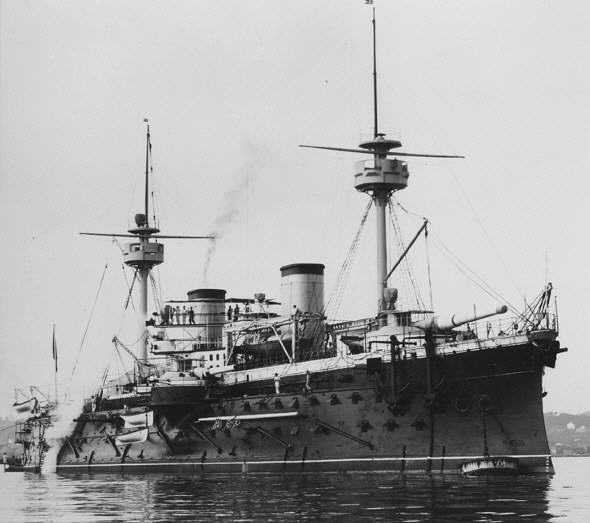
Based upon the 34 cm (13.4") Model 1880 design by the French armament firm of Canet, these guns were produced only for export.
In 1884 Canet sold three of these guns to the Japanese who used them on their Itsukushima class armored cruisers. In the same year, Admiral Antequera of the Spanish Navy proposed a large naval shipbuilding program that included six ocean-going battleships and contracted with Canet to build 28 cm (11") and 34 cm (13.4") guns for them. However, Admiral Antequera's program was greatly scaled back and only the battleship Pelayo was completed.
The actual bore of these guns was 32 cm/37.5 (12.6"), but in official Spanish Naval documents they were almost always listed as 32 cm/35 or rarely as 32 cm/40.
The Japanese guns were constructed by Schneider & Co, Chalon-sur-Saone and built according to the general principles of the Canet system. The inner tube was imported from Britain and overlaid with five outer tubes, which were manufactured in France. Two-thirds of the barrel was covered with up to ten layers of wire. Used a Farçot breech mechanism of the three-motion type with a de Bange obturator pad. The gun was fired by percussion. Although the French designated these weapons as 32 cm/40, the original Japanese Naval designation was 12.6"/38 KA (Canet) Gun. I believe that in 1908 they would have been redesignated as 12.6"/38 41st Year Type and that in 1917 they would have been redesignated as 32 cm/38 41st Year Type.
| Designation | Spain
32 cm/35 (12.6") Model 1880 Japan
|
|---|---|
| Ship Class Used On | Spain: Pelayo
Japan: Itsukushima class |
| Date Of Design | 1880 |
| Date In Service | Spain - 1888
Japan - 1890 |
| Gun Weight | Spain: 47.4 tons (48.2 mt)
Japan: 65.7 tons (67 mt) |
| Gun Length oa | 503 in (12.780 m) |
| Bore Length 1 | about 472 in (12.000 m) |
| Rifling Length | 478.75 in (12.160 m) |
| Grooves | (90) 0.063 in deep (1.6 mm) |
| Lands | N/A |
| Twist | N/A |
| Chamber Volume | N/A |
| Rate Of Fire | about 0.2 rounds per minute 2 |
- ^The Japanese guns were originally planned to have been 42 calibers long. However, calculations showed that this length would have caused the ships to heel over alarmingly, greatly reducing their effective elevation. See Mount / Turret Notes for additional information.
- ^Although the ROF given above was the official value, the reality was far different. During the Battle of the Yellow Sea (or Battle of the Yalu) during the Sino-Japanese War of 1895, all three Japanese cruisers took almost an hour between rounds. The Captain of Itsukushima reported firing five shells and having four mechanical breakdowns. In their later roles as training ships, the naval cadets joked that "by the time one shot is fired, the day is over."
| Type | Bag |
|---|---|
| Projectile Types and Weights 1a | Spain
AP (cast iron bomb) - 879.6 lbs. (400 kg) Japan
|
| Bursting Charge | Japan: AP: 22.4 lbs. (10.17 kg)
Others: N/A |
| Projectile Length | Japan: AP: 44 in (112 cm)
Others: N/A |
| Propellant Charge | Spain
485 lbs. (220 kg) of prismatic powder Japan
|
| Muzzle Velocity 2a | Spain
2,034 fps (620 mps) Japan
|
| Working Pressure | N/A |
| Approximate Barrel Life | N/A |
| Ammunition stowage per gun | Japan: 60 rounds
Others: N/A |
- ^The Spanish "cast iron bomb" had a better ballistic shape than did the Japanese HE shell. The Spanish shell had a Siacci's coefficient of 1.0 while the Japanese shell was closer to 1.5.
- ^The quality of the Spanish guns was poorer than those produced by Schneider & Co, hence the difference in muzzle velocities between the Japanese and Spanish weapons.
| Elevation | Range | Striking Velocity | Angle of Fall |
|---|---|---|---|
| 2.5 degrees | 3,230 yards (2,950 m) | 1,640 fps (500 mps) | 2.88 |
| 5.0 degrees | 5,690 yards (5,200 m) | 1,394 fps (425 mps) | 6.42 |
| 7.5 degrees | 7,660 yards (7,000 m) | 1,247 fps (380 mps) | 10.37 |
| 10.0 degrees | 9,350 yards (8,550 m) | 1,148 fps (350 mps) | 14.53 |
| 15.0 degrees | 12,030 yards (11,000 m) | 1,066 fps (325 mps) | 22.75 |
This table is a result of calculations, not actual firing trials.
| Elevation | Range |
|---|---|
| Effective Range | 8,750 yards (8,000 m) |
| Maximum Range | 13,120 yards (12,000 m) |
| Range | Krupp Vertical Armor | Deck Armor |
|---|---|---|
| 3,230 yards (2,950 m) | 13.9 in (353 mm) | 0.2 in (6 mm) |
| 5,690 yards (5,200 m) | 11.0 in (279 mm) | 0.5 in (12 mm) |
| 7,660 yards (7,000 m) | 9.2 in (233 mm) | 0.8 in (21 mm) |
| 9,350 yards (8,550 m) | 8.0 in (204 mm) | 1.2 in (30 mm) |
| 12,030 yards (11,000 m) | 6.7 in (170 mm) | 1.9 in (49 mm) |
These values are from "Ships of the Russian-Japanese War" based upon calculations using Jacob-de-Marr's armor penetration formula.
| Range | Wrought Iron Vertical Armor |
|---|---|
| 0 yards (0 m) | 43.74 in (1,111 mm) |
| 8,750 yards (8,000 m) | 13.14 in (334 mm) |
Data from "Sankeikan."
| Designation | Single Barbette mounts
Spain
Japan
|
|---|---|
| Weight | N/A |
| Elevation | Spain: -5 / +15 degrees
Japan: -4 / +10.5 degrees |
| Elevation Rate | N/A |
| Train | Pelayo: -125 / +125 degrees (bow gun), -110 / + 110 (stern gun)
Itsukushima and Hisidate (bow gun): -140 / +140 degrees
|
| Train Rate | N/A |
| Gun recoil | N/A |
| Loading Angle | about +5 degrees |
- This gun and mounting was not balanced and was too big for the Japanese cruisers. Training the gun abeam would cause the ships to heel over, making it difficult to achieve the correct bearing and elevation. This was because the position of the trunnion was far forward of the center of the training axis and because these ships had a low GM in order to make them steady gun platforms.
- The Japanese mountings used water hydraulic pumps powered by a three-cylinder steam pump. In an emergency, the steam pump could be replaced by a hand pump needing twenty men to operate.
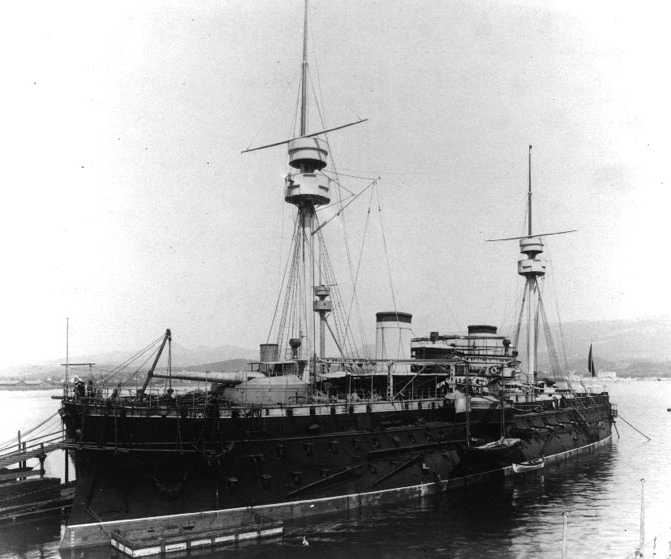
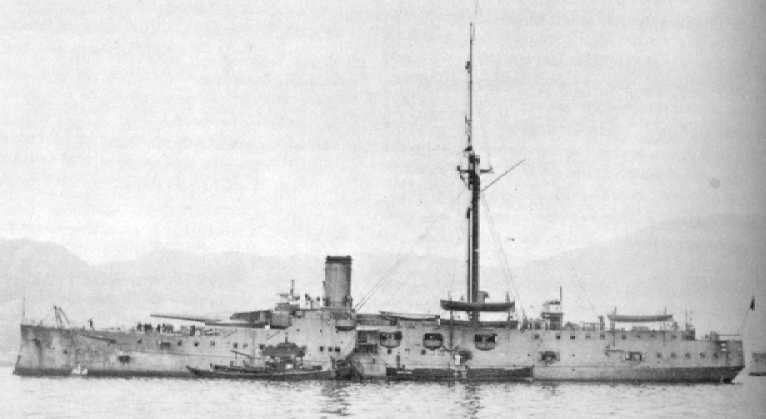

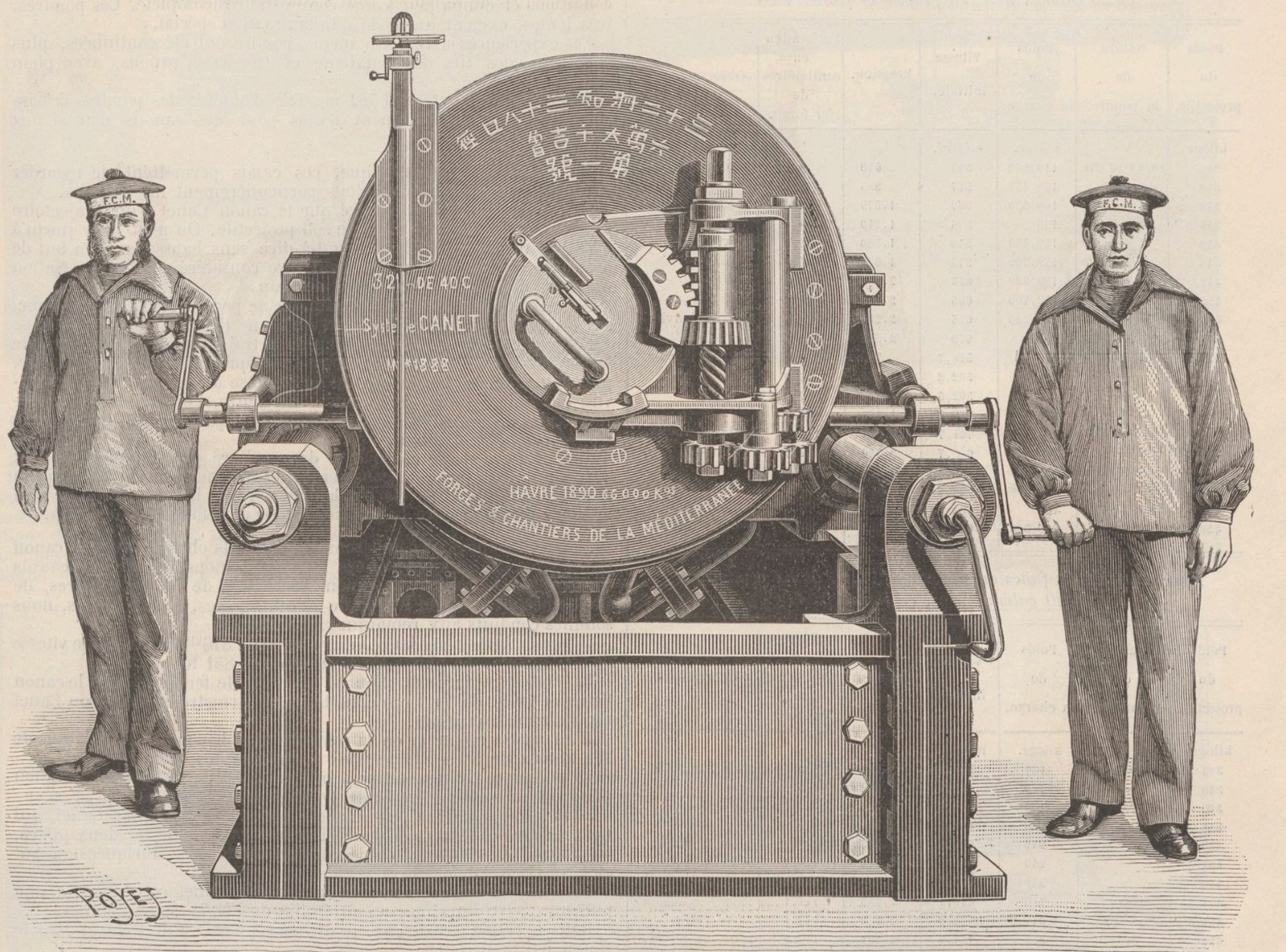
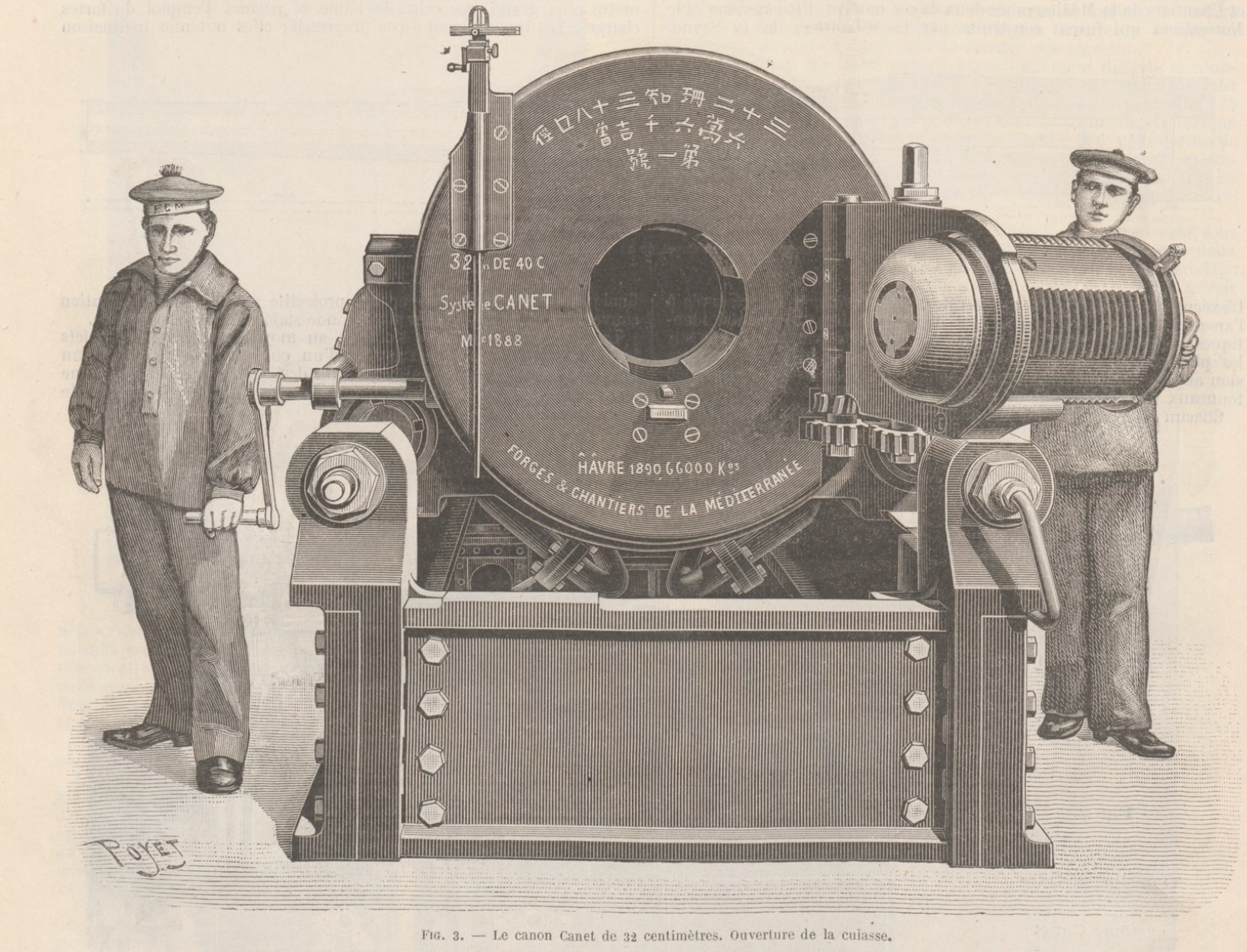
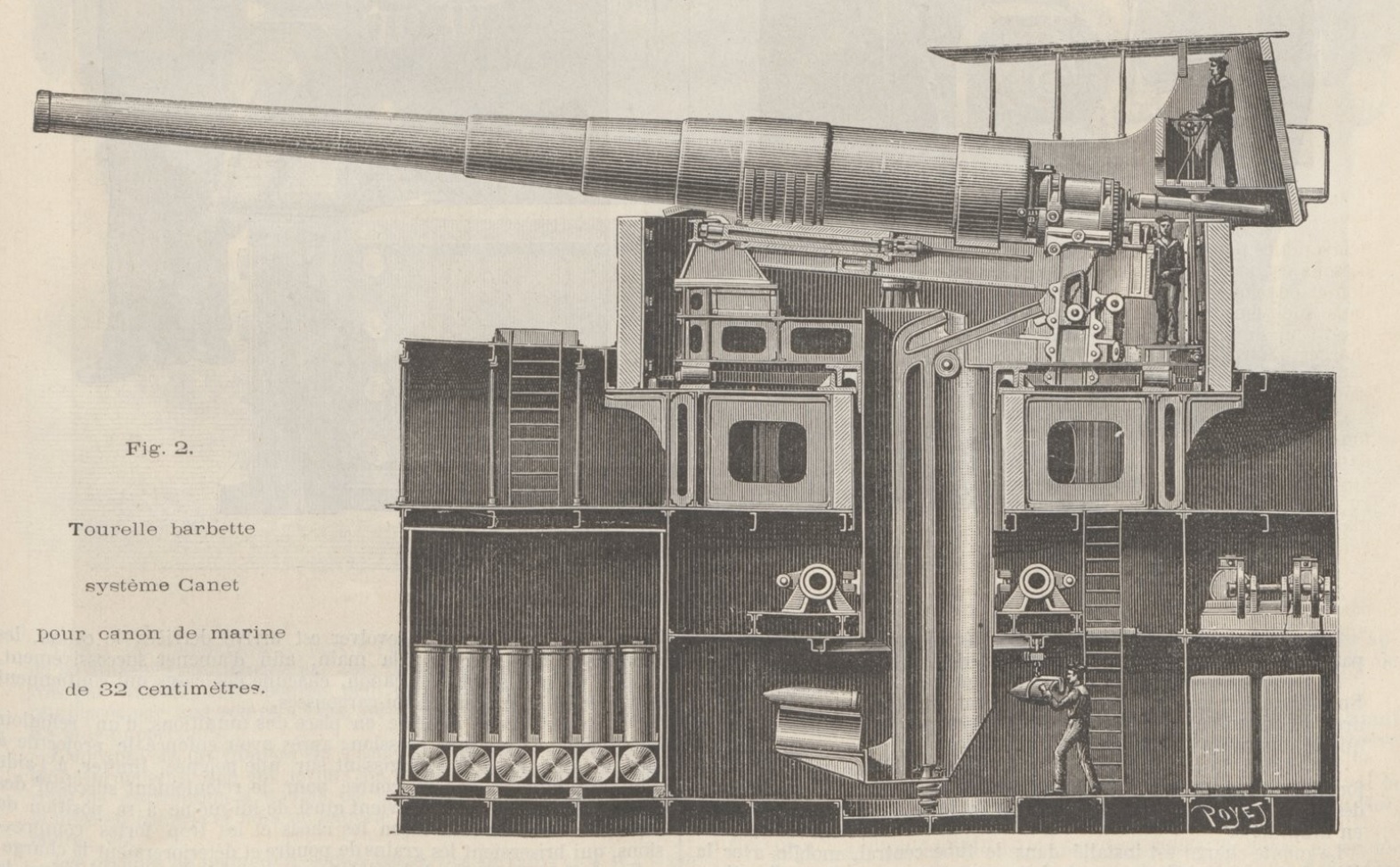
"Sankeikan: Japan's Coast Defence Ships of the Matsushima Class" article in "Warship 1990" by Jiro Itani, Hans Lengerer and Tomoko Rehm-Takahara
"Japanese Cruisers of the Pacific War" by Eric Lacroix and Linton Wells III
---
"Ships of the Russian-Japanese War: Part 2, Japanese Navy" by Suliga S.
"Navies and Naval Guidebook" (VKAM-99) published under authority of Great Prince Alexander Mikhailovich
Le Génie Civil Tome XX No. 6 of 12 December 1891 at Bibliothèque nationale de France
---
Special help from Nicholas W. Mitiuckov, Javier Villarroya del Real and Helen Peeters
20 May 2006 - Benchmark
18 February 2012 - Updated to latest template
31 October 2016 - Converted to HTML 5 format
22 July 2019 - Added sketches and data from Le Génie Civil, reorganized notes
02 February 2021 - Updated description to more accurately show manufacturers
20 September 2023 - Updated description of breech mechanism and added sketch of closed breech plug
